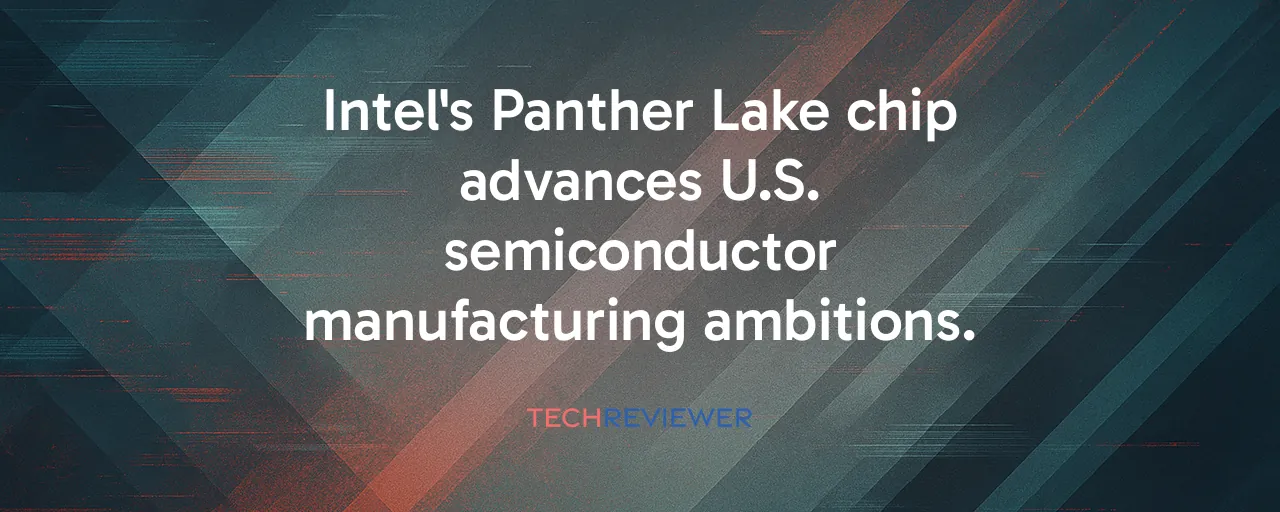A New Era for American Chips
Intel unveiled its Panther Lake laptop processor Thursday, marking a pivotal moment for America's role in advanced chipmaking. Built in Arizona's newly operational Fab 52 using Intel's cutting-edge 18A process, this chip carries the weight of a massive national bet. With billions in government funding and private investments from Nvidia and SoftBank, Intel is trying to bring high-tech manufacturing back to U.S. soil, challenging the dominance of Asian foundries like TSMC and Samsung.
The stakes are high: Intel's poured over $50 billion into its Arizona facilities, and the government's taken a nearly 10% stake in the company through CHIPS Act funding. Panther Lake's success when it hits laptops in early 2026 could signal a turning point for American semiconductor ambitions. If it falls short, doubts about domestic manufacturing's viability will grow louder.
Inside the 18A Breakthrough
What makes Panther Lake stand out? It's the first consumer chip built on Intel's 18A process, a leap forward in transistor tech that's been years in the making. The 18A node uses RibbonFET, a gate-all-around design that wraps the transistor's gate around the channel for better control and efficiency. Add to that PowerVia, a clever trick that routes power through the chip's backside, freeing up space for signals and boosting density by 30% over Intel's older Intel 3 process. These aren't just buzzwords; they translate to real gains: up to 15% better performance per watt and 25% higher frequencies at the same voltage.
Panther Lake itself is a beast, packing up to 16 CPU cores, 12 Xe3 graphics cores, and 50 TOPS of AI processing power. Compared to its predecessor, Lunar Lake, it delivers 50% better multithreaded performance and 10% lower power consumption. For users, that means faster laptops for gaming, content creation, and AI tasks like real-time translation, all without draining the battery. Intel's already powered on these chips, and they're set for retail in early 2026, a sign the 18A process is ready for prime time.
Lessons From the Desert Intel vs TSMC
Intel's Arizona gamble isn't happening in a vacuum. Look at TSMC's own Arizona fab, which offers a sobering case study. TSMC broke ground around the same time as Intel's Fab 52, aiming to produce chips by 2024. But delays and cost overruns pushed that timeline to 2025, with budgets ballooning from $12 billion to $20 billion. The lesson? Building advanced chip factories in the U.S. is brutally tough. Higher labor costs, a less mature supply chain, and a shortage of skilled workers make it harder to match Asia's efficiency. TSMC's struggles show that even the world's top foundry faces hurdles on American soil.
Intel's story is different but no less challenging. Fab 52 hit volume production in summer 2025, right on schedule, and Panther Lake's compute tile is fully made in Arizona. But not everything is domestic: the chip's platform controller comes from TSMC, and some GPU tiles use TSMC processes too. This hybrid approach keeps Intel tethered to global supply chains, a reminder that full U.S. independence is still a long way off. Yet Intel's vertical integration, designing and building its own chips, gives it an edge in fine-tuning performance, something fabless rivals like AMD can't match as easily.
The Bigger Picture Risks and Rewards
Intel's push combines technological innovation with geopolitical and economic objectives. The U.S. government's $8.9 billion CHIPS Act investment, plus $7 billion from Nvidia and SoftBank, shows how seriously everyone's taking this. Semiconductors power everything from laptops to defense systems, and relying on Asia, especially Taiwan, leaves the U.S. vulnerable to disruptions like earthquakes or geopolitical tensions. A successful Fab 52 could diversify the supply chain, create thousands of jobs, and spark economic growth in Arizona's communities. Universities are already partnering with Intel to train the next generation of engineers, building a foundation for long-term competitiveness.
But risks loom large. Intel's yet to land major external foundry customers for 18A, meaning Fab 52 mostly serves Intel's own products for now. If big players like Microsoft or Apple don't sign on, the economics could falter. American manufacturing costs 30-40% more than Asia's, and Intel's admitted it might pause its next-gen 14A process if demand doesn't materialize. Then there's AMD, which grabbed 32% of desktop CPU share in 2025, eating into Intel's dominance. Panther Lake needs to deliver, or Intel's foundry dreams could stall.
What's Next for Intel and America
The next 18 months will be make-or-break. If Panther Lake-powered laptops fly off shelves in 2026, Intel could attract the external customers it needs to keep Fab 52 humming and justify the 14A process. Success would mean more than just profits; it would prove the U.S. can hold its own in the cutthroat world of chipmaking. But failure could see Intel cede ground to TSMC and Samsung, who are already charging ahead with their own two-nanometer processes. The industry's consolidating around just a few players who can afford the multi-billion-dollar price tag of cutting-edge nodes.
For now, Intel's Arizona fab is a beacon of possibility. It's a chance to rebuild an industry that started in America but drifted overseas. The government, investors, and PC makers like Dell and HP are watching closely, hoping Intel can deliver chips that power the next wave of AI-driven computing. Whether it's a triumphant return or a costly misstep, Panther Lake's journey will shape the future of American tech for years to come.
